Recipes
Step by Step Puff Pastry
There is no comparison between bought frozen puff pastry and homemade all butter pastry.
Puff pastry takes a bit of practice but the effort is worth it. Our 6 Month Diploma students concentrate on mastering this skill in their second term.
Essentially puff pastry is a laminated dough which consists of two elements: the detrempe (or base dough) and the beurrage (butter in a flat square shape). To make the detrempe base dough we use a little lard but if you would prefer to use butter at this stage you can.
When you make puff pastry for the first time you should use the smaller amount of butter but as you get more practice you can increase the amount of butter until it is equal to the flour weight.
Some people use strong flour rather than plain flour to make the gluten stronger but we find that ordinary plain flour works very well.
When rolling the pastry out take care not to let the butter escape either from the sides or between the layers. Once the butter is added the pastry is rolled and folded into 3 five or six times. The best puff will probably have 6 rolls and folds which will produce pastry with 729 layers.
The butter should not be allowed to get too warm but also if you put it into the fridge for too long you should let it come back up to approximately 16C or the butter will break within the layers. The gluten strands also need to rest between rolls and folds but if the room is cold this can be done out of the fridge.
When the pastry is cooked the fat melts into the layers and the water in both the fat and the dough creates steam which puffs the layers up. It should be as light as air and not at all fatty.

Ingredients
Yield – servings
Instructions
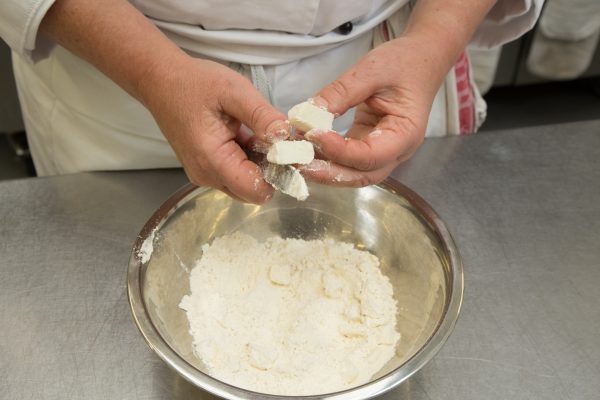
Sift the flour and cut the lard into small cubes. Rub into the flour until well dispersed.
Pour in the very cold water and mix well using a round bladed cutlery knife. The dough should come together well but should not be too wet.
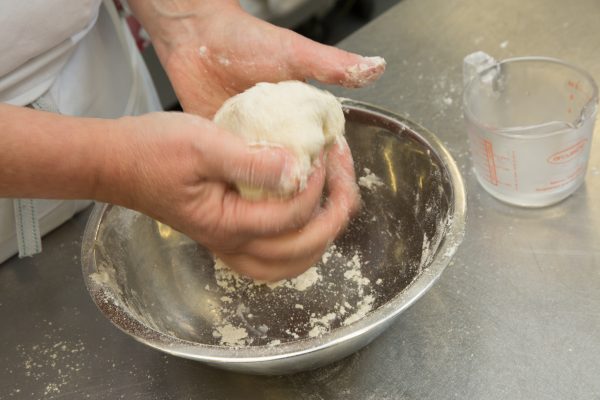
Collect the dough from the bowl and knead it very lightly on a floured work surface.

This is the detrempe or base dough. Wrap in cling film and chill for about 20 – 30 minutes.
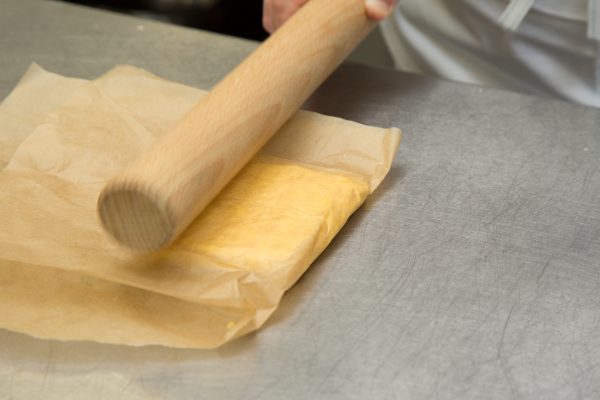
Put the butter between two pieces of parchment paper or cling film and lightly tap out so that it forms an oblong shape. Keep the edges straight and the corners square. This is your beurrage
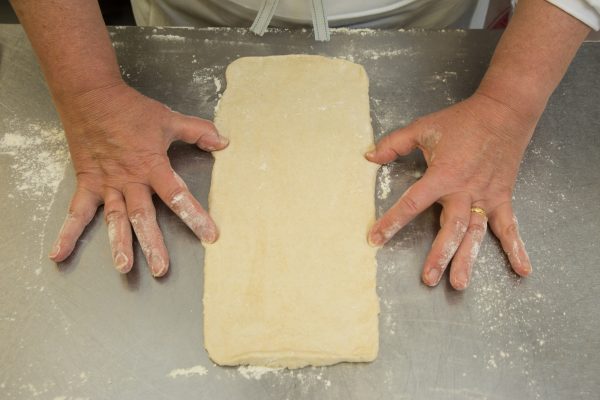
Roll out the detrempe on a floured surface. Measure a third of the dough in the middle and roll out little ears or lugs.
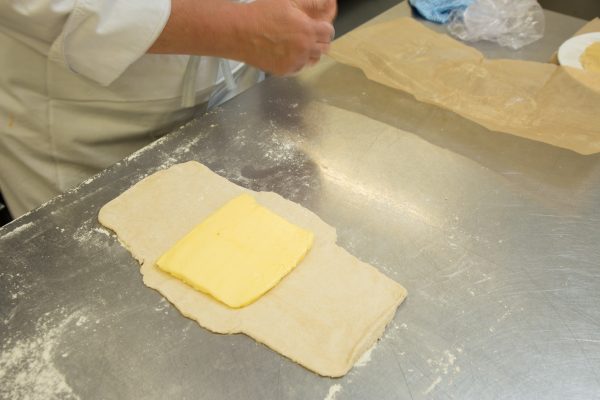
Place the butter in the centre of the dough.
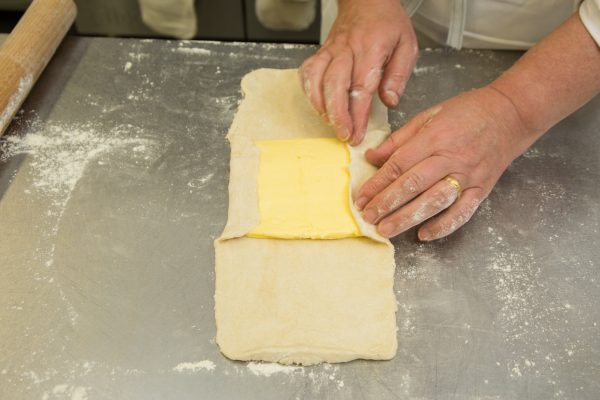
Fold the ears or lugs of pastry over the butter.
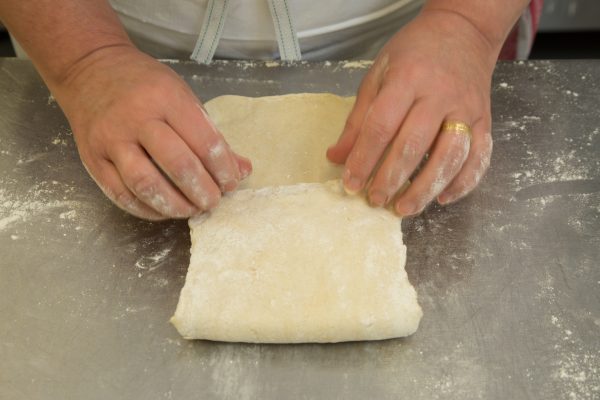
Bring the top third of pastry down over the butter and the bottom third up over that.
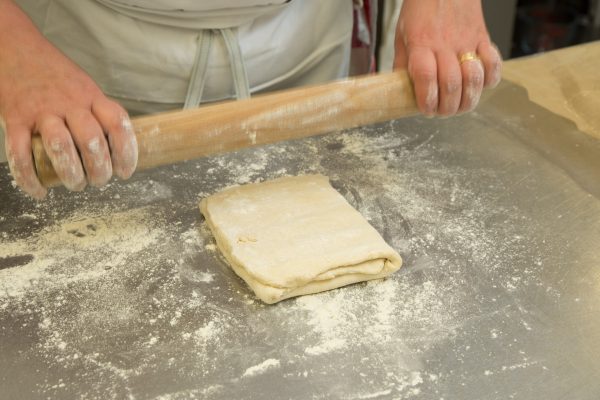
Make a quarter turn of the pastry so that the pastry would open like a book with the spine on your left and the top opening on your right. Lightly tap the pastry all the way up with the rolling pin and then gently roll.
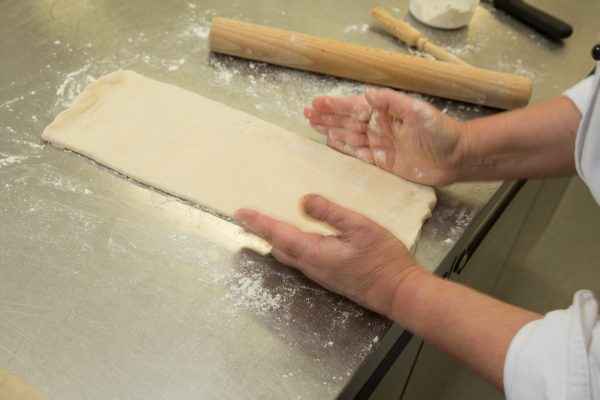
As you roll keep the edges straight and the corners square. This is very important. Once it is roughly three times as long as it is wide bring the top third of pastry down and fold the bottom third on top. Make a quarter turn and be ready to tap the pastry out again and then roll into a strip again.
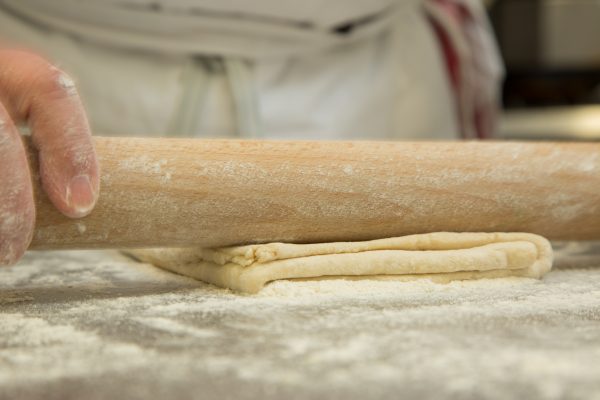
You should never roll over the edges but should always be able to see those three layers.

After two rolls and folds mark the number you have done on the pastry with a round bladed knife, wrap in cling film and allow it to rest for 20 minutes. If it goes in the refrigerator allow it to come back up to temperature before you start rolling it again.
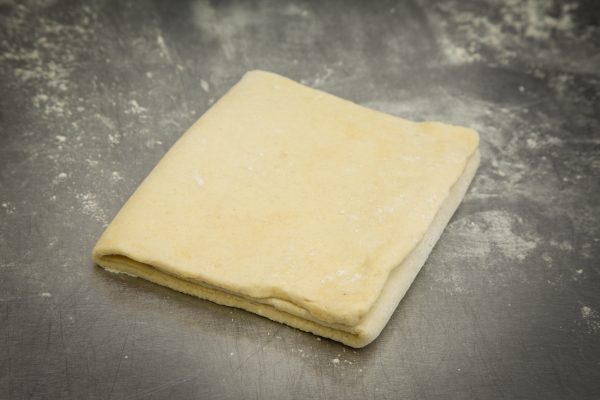
Continue until you have rolled and folded the pastry at least 5 times but no more than 6. The pastry shouldn’t be at all streaky. It is now ready to use.
If you enjoyed the recipe or have any questions at all, feel free to email us at info@entcs.co.uk and we’ll be happy to help! Share your creations using our #ENTCSCreations hashtag on Instagram. Check out our other recipes by visiting our Recipe tab and subscribe to our Youtube channel for some exciting recipe videos.
